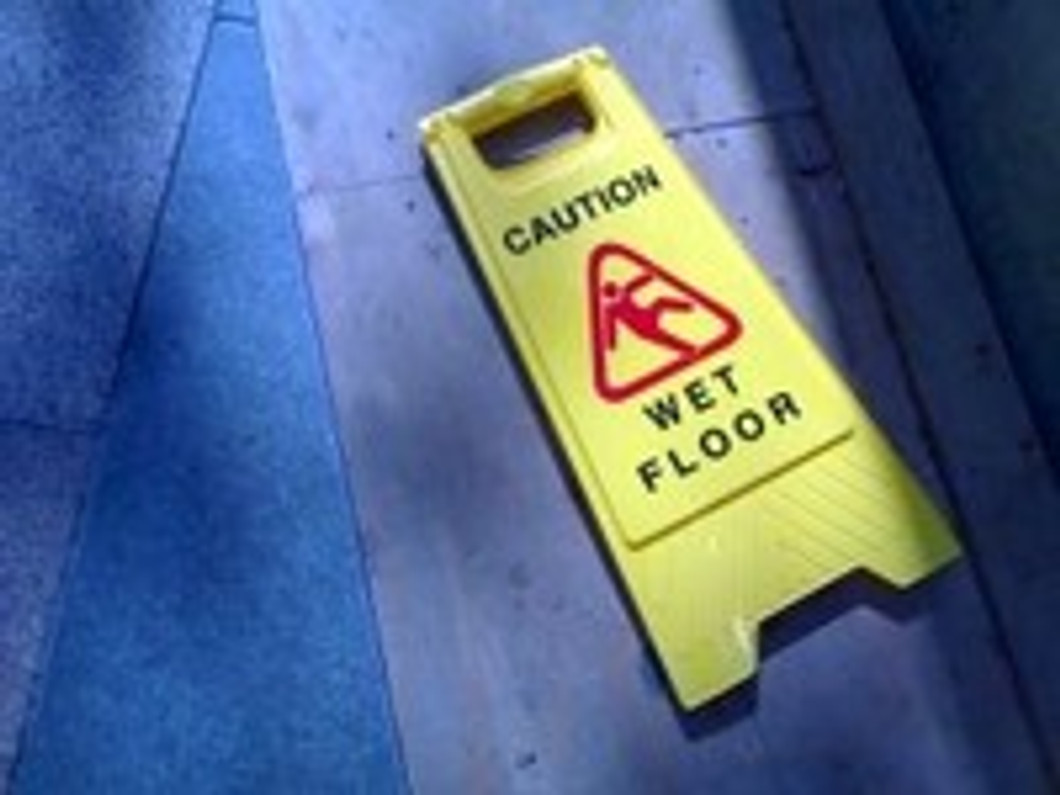The Dangers of Slip-and-Fall Accidents In The Workplace
Slip-and-fall accidents are one of the most common types of work-related injuries. Unfortunately, many employers overlook the dangers of such injuries, assuming they only involve minor injuries like cuts, scraps and bruising. According to data presented by Occupational Safety and Health Administration (OSHA), however, 15% percent of all accidental deaths are the result of the slips, trips and falls, making it the second leading cause of accidental deaths (first being motor vehicles).
A 2006 Liberty Mutual Workplace Safety Index found the direct costs of work-related slips, trips and falls in the U.S. to exceed $11 billion -- an estimates cost that does NOT account for indirect costs like rehiring, training, fixing broken equipment, and higher insurance premiums. According to this index, the average direct cost of a slip-and-fall accident in the workplace is approximately $22,800.
When worker is injured while on the job, he or she is entitled to monetary compensation through Worker's Compensation program. The total payout varies depending on the worker's "normal pay," but the average for a slip-and-fall accident is $19,000.
It's important to note that work-related slip-and-fall accidents are typically broken up into two categories: elevated and same-level. Elevated falls occur on a raised platform, such as a catwalk, ladder, rooftop, etc., whereas same-level falls occur on the ground level. Elevated falls are less common but often result in more serious injuries, which is why it's important for employers to stress safety among employees working on elevated surfaces.
It's not just workers who are at risk for slip-and-fall accidents; customers, clients and general public can fall victim to injury if certain precautions are not taken. If a gallon of milk is spilled in a grocery store and no one cleans up, a customer could slip and injure themselves. Of course, the grocery store may then be liable for any medical bills incurred by the injured customer.
So, how can you prevent slip-and-fall accidents? The golden rule of preventing such injuries is to keep the floors clean and free of debris at all times. Seemingly harmless items like loose tools, lumber, and boxes of nails create a serious hazard when left across the floor.
Spilled liquids or event water also pose a risk for slip-and-fall accidents. When a spill occurs, make sure it's cleaned in a timely manner. Placing a sign on the still-wet floor will also reduce the risk of injury.
Recent Posts
-
Fire Safety in the Workplace: What You Need to Know
What steps are you taking to prevent fires in your workplace? According to the U.S. Occupational Saf …Aug 23rd 2023 -
Is It Safe to Go Jogging With a Cold Infection?
If you're suffering from a cold infection, you might be wondering whether it's safe to go jogging. T …Aug 22nd 2023 -
5 Safety Tips to Follow When Using a Powder-Actuated Tool
Powder-actuated tools are commonly used to join materials to steel and concrete. Also known as Hilti …Aug 20th 2023




